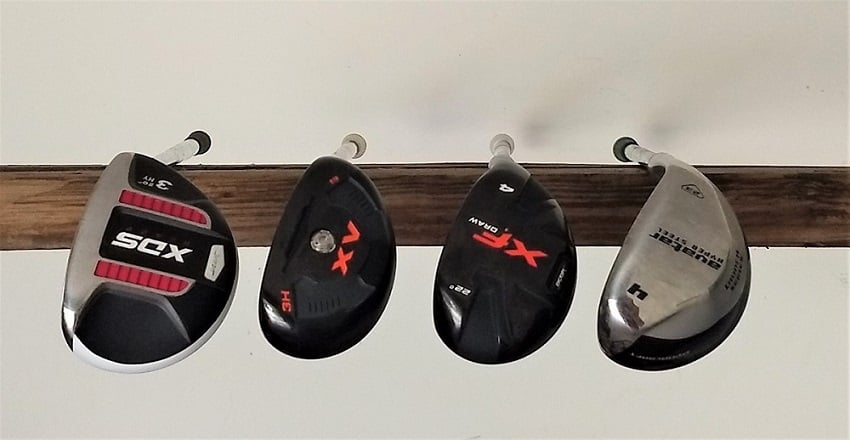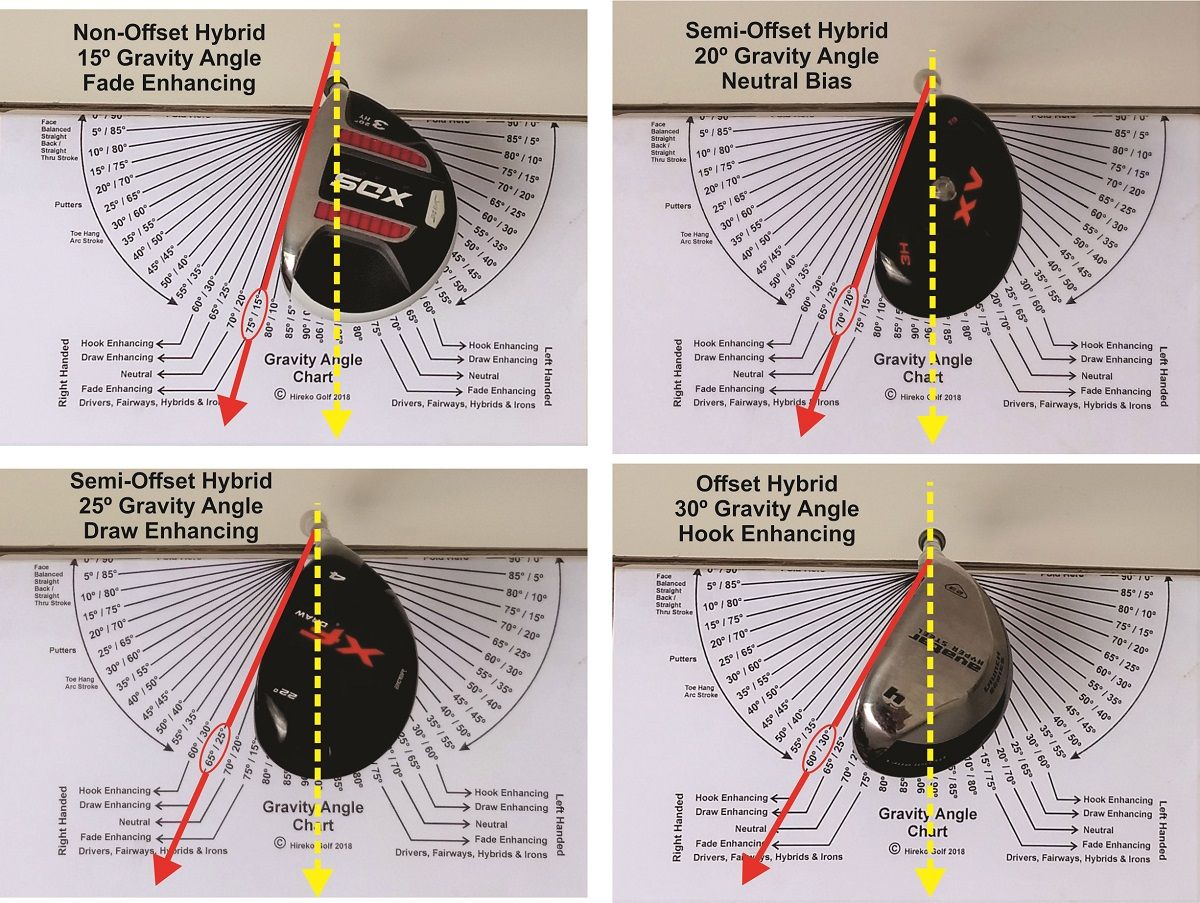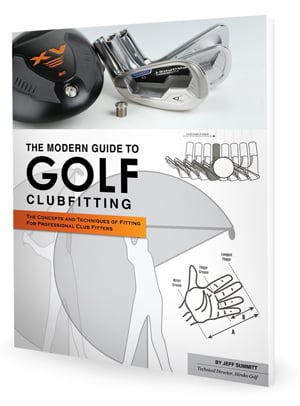Understanding and Measuring Gravity Angle on Golf Clubs
There is one term most golfers have not heard of and one they should really be aware of, especially if they are in the market for new clubs. That term is "Gravity Angle" and it is analogous to toe hang on a putter. For a tutorial on putter toe hang visit the article Understanding and Measuring Putter Toe Hang.
Perhaps you glanced at clubs that were laying on a table or lying on a rack and noticed that the engravings on the sole were at all various positions. Or perhaps you balanced the shaft on your finger and noticed the club head rotated to a certain position. Well, you are well on the way to understanding gravity angle of a golf club. By the end of this article, you should be able to tell through observation which of these hybrids pictured would be best for someone that may push, fade or slice the ball.

The reason the head rotates is due to the center of gravity not being in line with the centerline axis of the shaft; rather offset behind. When the club is placed on a flat surface with the clubhead overhanging, the head will naturally want to rotate until the center of gravity is aligned vertically with the shaft. The gravity angle is the difference between the leading edge of the face from the gravity line in degrees.
Measuring Gravity Angle
Hireko has made a handy chart so you can accurately measure the gravity angle of any club. Go to this link, download the PDF and print it off. Finally fold along the line that says, "Fold Here". Then you can place the chart on any edge where you have a square corner. The video on the right will show you how.
CLICK HERE FOR THE HIREKO PUTTER TOE HANG / GRAVITY ANGLE CHART
Gravity Angle in Pictures
As we saw in the putter toe hang article, certain gravity angles are better for certain swing tendencies. In this picture we have 4 different type of gravity angles. While these pictures pertain to hybrids, the same principles apply to any clubhead category.

The fade enhancing hybrid (upper left) shows a gravity angle of 15º. The red line is the leading edge of the face, while the yellow dotted line is the gravity line with the center of gravity positioned somewhere on that line. This type of hybrid is configured like a fairway wood featuring full face progression. It is not uncommon for reduced offset irons and drivers where weight has been intentionally positioned toward the toe to have a similar gravity angle. Most golfers should shy away from this low of a gravity angle unless their tendency is to hook or draw the ball.
A gravity angle of 20º is considered neutral biased in any swing club. The model in this example has a semi-offset hosel or where the hosel is shifted slightly forward toward the leading edge, but not to the extent of an iron. Narrower hybrids or ones where more weight is forward will likely be neutral biased.
The draw enhancing hybrid shown has a gravity angle of 25 degrees. This may have the hosel slightly more forward, but not a true offset or there may be a lot of weight positioned in the rear of the club or even toward the heel. Offset drivers and fairway woods and irons with copious amount of offset can also have gravity angles in or around 25º to help those that push or fade the ball.
A swing club with a 30º gravity angle is not as common even though most golfers slice the ball. The hybrid pictured is more of an iron-wood where it has an iron profile and full offset like a regular iron. Because the sole is wide it shifts the center of gravity well behind the shaft's axis. You might find drivers that have an offset plus additional weighting toward the heel that may exhibit such a high gravity angle to assist those with extremely bad slices off the tee.
For more information on gravity angle, consult the Modern Guide to Golf Clubfitting book, chapters 7 and 8.

